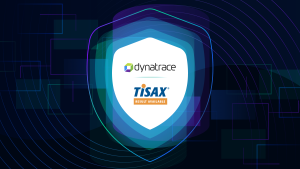Cybersecurity Awareness Month is a joint effort between the U.S. federal government and the IT security industry to raise awareness of the importance of cybersecurity throughout the world. Because cyberattacks are increasing as application delivery gets more complex, it is crucial to put in place some cybersecurity best practices to protect your organization’s data and privacy.
Implementing strong cybersecurity best practices, including vulnerability management and runtime vulnerability detection, broadening your security to include all layers of your tech stack, and establishing DevSecOps automation principles are essential to establishing a robust security stature for your organization.
Owning the responsibility and effort to build good cyber security practices now will improve your DevSecOps team’s overall productivity and efficiency in the future.
What is Cybersecurity Awareness Month all about?
The theme for Cybersecurity Awareness Month this October 2022 is ‘See Yourself in Cyber’. What does that mean? The Cybersecurity and Infrastructure Security Agency (CISA) and National Cybersecurity Alliance (NCA) state that cyber security is truly about the people. This month, the event organizers will provide information and resources to help educate CISA partners and the public. The goal is to help individuals and organizations to make smart decisions and protect themselves online as threats to technology and confidential data become more commonplace.
CISA and NCA recommend you do four things this month:
- Enable multi-factor authentication
- Use strong passwords
- Recognize and report phishing
- Update your software
To Dynatrace, ‘See Yourself in Cyber’ means making better use of your employees and improving the productivity of your DevSecOps teams. You can achieve this through a few best practices and tools.
Essential cybersecurity best practices for Cybersecurity Awareness Month—and every day
This Cybersecurity Awareness Month makes it clear why it’s more important than ever to protect your organization’s brand, information, and privacy. You can prevent or limit a significant number of cyberattacks by vulnerability management, application security monitoring, and DevSecOps automation.
1. Vulnerability management
Vulnerability management is the practice of identifying, prioritizing, correcting, and reporting software vulnerabilities. Implementing a well-designed vulnerability management practice throughout all stages of the software development lifecycle (SDLC) can provide an organization’s development team with significant benefits.
By automating vulnerability scanning as part of the SDLC, developers can release innovative features faster. Without the additional overhead of manual vulnerability scanning, teams can discover and remediate vulnerabilities during development. Similarly, by monitoring the runtime environment for vulnerabilities, organizations can identify and fix vulnerabilities that only become apparent in production.
2. Application security monitoring
Every layer of an application stack contributes to the security posture of an application and can potentially contain vulnerabilities. The number of entry points through which attackers can infiltrate your company’s environment is constantly expanding.
Application security monitoring helps you to visualize, analyze, and monitor security vulnerabilities in your environment that are related to third-party libraries at runtime. Accurate runtime vulnerability detection and analysis tools, like Dynatrace, can help collect deep monitoring information about all the processes running on your systems, in real-time. As soon as vulnerable code is detected, Dynatrace triggers an automated full analysis of the impact on your environment and provides deep insights for your security teams. Security problems are raised, tracked over time, and closed automatically as soon as the vulnerability is remediated.
3. DevSecOps automation
With the rise of multicloud environments, many organizations are struggling to deal with the complexity and security risks of their modern applications. As a result, organizations are looking to incorporate DevSecOps automation practices to build an overall stronger company security posture. DevSecOps builds on existing DevOps culture and practices, integrating security into every step of the software development lifecycle.
With DevSecOps, organizations can save valuable resources, time, and cost by preventing problems before they occur and remediating security issues in a timely manner. DevSecOps automation encourages organizations to discover that application security should be a collaborative responsibility between all teams involved in the SDLC—including security, development, and IT operation teams—rather than a traditional, siloed approach. Implementing a strong DevSecOps automation model and utilizing it in conjunction with observability and security practices will transform organizations’ SDLC into a much faster and more secure process.
Downfalls of not adopting cybersecurity best practices
By focusing on the people behind the technology we interact with daily, this Cybersecurity Awareness Month highlights the consequences of not embracing cybersecurity best practices. Some of these disadvantages include the following:
- Increased susceptibility to new attacks. Not keeping up to date with continuously evolving cyber security trends makes organizations more susceptible to new kinds of attacks. As a result, teams have to pick up the pieces while the risk increases and expands.
- Greater risk from software vulnerabilities. By not integrating security into every step of the software development lifecycle (SDLC), organizations are at a higher risk of cyberattacks that exploit application security vulnerabilities, eventually affecting your software quality, delivery rates, and customer satisfaction.
- Decreased security awareness. Not informing and educating employees about overall security awareness will leave many teams unprepared. As a result, DevSecOps teams continue to work in silos, slowing development and increasing security risks. Teams should be trained on security concerns in addition to their typical responsibilities.
Making your company more vulnerable and prone to cyber-attacks can affect the reputation of the brand and severely impact performance and delivery speed.
How a unified software intelligence platform delivers on cybersecurity best practices and DevSecOps productivity
The ultimate best practice to adopt for Cybersecurity Awareness Month is taking an AI-driven observability-based approach to cybersecurity. Combining application security and observability data in a single analytics platform is necessary for organizations to improve application performance and security, and accelerate DevSecOps efficiency.
Dynatrace Application Security enables teams to build core DevSecOps practices while automatically detecting vulnerabilities at runtime and sifting through the noise. Dynatrace OneAgent provides teams with an observability-driven approach to security monitoring, informing you of any vulnerabilities or attacks as they arise in real time. Dynatrace incorporates security into each phase of the SDLC, providing a unified platform for real-time vulnerability analysis and remediation task automation.
Many traditional security monitoring tools can take a long time to scan complex multicloud environments and perform vulnerability assessments. Using deterministic AI, Dynatrace Application Security allows organizations to maximize their DevSecOps team’s productivity by cutting that crucial time. This efficiency results in more room for DevSecOps collaboration and more time to initiate remediation plans.
To learn more about how Dynatrace can help you implement cybersecurity best practices this Cybersecurity Awareness Month, join us for an on-demand webinar, Intelligent Automation for DevSecOps.




Looking for answers?
Start a new discussion or ask for help in our Q&A forum.
Go to forum